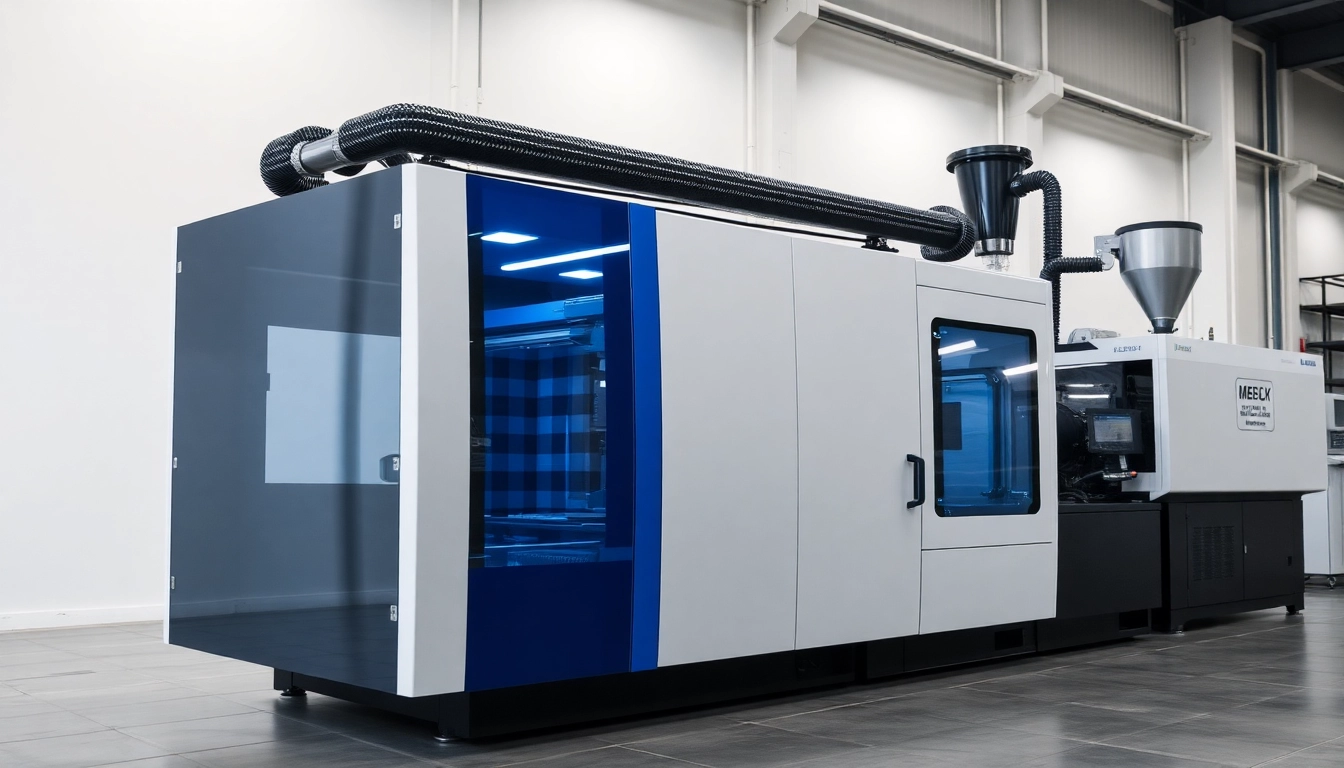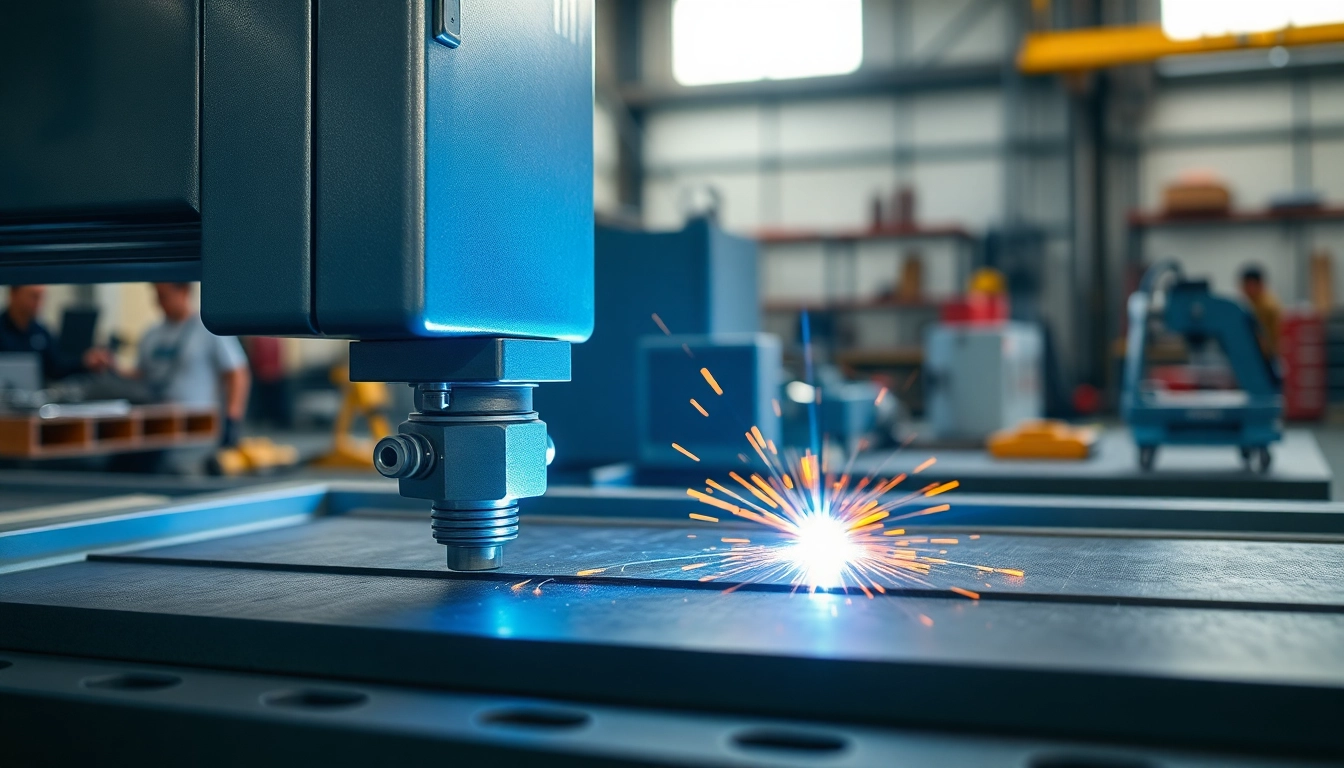
Understanding Blow Molding Technology
Blow molding is a key process in the manufacturing of various hollow plastic products, which are utilized in numerous industries, from packaging to automotive to consumer goods. Understanding the fundamentals of blow molding technology is essential for manufacturers looking to optimize their production capabilities and enhance the quality of their products. As the demand for innovative and efficient manufacturing processes grows, the role of a reliable Blow Molding Machine Manufacturer has become increasingly vital.
Types of Blow Molding Machines
There are primarily three types of blow molding machines, each suited for different applications:
- Extrusion Blow Molding (EBM): This method involves the extrusion of plastic into a parison, which is then inflated to form a hollow container. EBM is commonly used for producing bottles, containers, and tanks.
- Injection Blow Molding (IBM): This technique combines injection molding and blow molding processes. It is suitable for small, precise products like medical devices or specialty containers.
- Stretch Blow Molding: In this method, the preform is heated and stretched to form high-quality bottles. This process enhances the strength and clarity of the final product, making it ideal for beverage bottles.
How Blow Molding Works
The blow molding process consists of several key steps:
- Preparation: Plastic resin is melted and formed into a parison or preform, depending on the type of blow molding.
- Blowing: The parison is placed in a mold, and air is injected, expanding the material to fit the mold.
- Cooling: The molded item is cooled to hold its shape, often using water or air.
- Ejection: Once set, the product is ejected from the mold, ready for trimming or further processing.
Applications of Blow Molding Products
Blow molding is widely used due to its versatility. Common applications include:
- Packaging: From personal care products to food and beverages, blow molded containers are essential.
- Automotive Parts: Lightweight and durable components such as fuel tanks and structural parts.
- Consumer Products: Household goods like toys, sporting equipment, and industrial containers.
Choosing the Right Blow Molding Manufacturer
Selecting the right blow molding manufacturer involves careful consideration of various factors to ensure the best fit for your needs.
Key Considerations in Machine Selection
When evaluating blow molding machines, consider the following:
- Type of Product: Identify whether you need EBM, IBM, or stretch blow molding based on the specific characteristics of your desired product.
- Production Volume: Assess how the capacity of the machine aligns with your production needs.
- Technology: Invest in machines that incorporate advanced technology for better efficiency and precision.
Evaluating Manufacturer Reputation
Research potential manufacturers by looking at:
- Industry Experience: Established manufacturers with a proven track record are often more reliable.
- Customer Reviews: Feedback from previous clients can provide insights into machine performance and customer service.
- Certifications: Look for manufacturers with industry-standard certifications which indicate quality and safety compliance.
Cost vs. Quality Analysis
While it may be tempting to choose the cheapest option, it’s essential to balance cost with quality. Consideration should be given to:
- Long-term ROI: Assess the total cost of ownership, including maintenance, energy consumption, and labor costs.
- Quality of Output: Higher quality machines often yield better products, leading to fewer defects and returns.
Benefits of Advanced Blow Molding Machines
Energy Efficiency and Sustainability
Modern blow molding machines are designed with energy efficiency in mind. Features such as:
- Variable Speed Drives: Reduce energy consumption by adjusting the motor speed to match production needs.
- Heat Recovery Systems: Capture and reuse heat generated during the molding process.
Additionally, many manufacturers are now focusing on sustainable practices, such as using recyclable materials and reducing waste during production.
Increased Production Rates
Advanced machines allow for:
- High-Speed Production: Capable of producing large volumes of products in shorter timeframes, meeting rising consumer demands.
- Reduced Cycle Times: Enhanced design speeds up the overall process, allowing for more flexibility in operational schedules.
Versatility in Production
Modern blow molding machinery can produce a wide range of products, making it easier for companies to diversify their product lines without needing entirely new equipment. For example:
- Customization: Many blow molding manufacturers enable customization options to suit specific needs, including shapes, sizes, and colors.
- Multi-Layer Capability: Some machines can produce multi-layer containers, improving functionality and product lifespan.
Exploring Top Blow Molding Machine Brands
Choosing a reputable brand for blow molding machinery is crucial for securing quality and support.
Market Leaders in Blow Molding
Several brands stand out in the blow molding landscape, including:
- Uniloy: Known for its versatility, Uniloy integrates multiple technologies into its machines.
- Jomar Corporation: A leader in IBM, with over 50 years of experience in the industry.
- Graham Engineering: Offers innovative solutions, including the Graham Wheel system for rotary blow molding.
Innovative Technologies Offered
Market leaders are continually innovating, with features such as:
- Smart Technology: Machines that incorporate AI and IoT technologies to optimize performance and reduce waste.
- Enhanced Materials Processing: Benefits from advancements in resin technology and auxiliary equipment.
Case Studies of Successful Implementations
To illustrate the advantages of partnering with top manufacturers, let’s examine a couple of case studies:
- Major Beverage Company: A leader in the beverage industry successfully increased its production efficiency by 30% after transitioning to a new EBM system, allowing for faster production of lightweight bottles.
- Pharmaceutical Manufacturer: Implemented an IBM system that reduced production time by 25% while improving compliance and product integrity due to the precision of the machines.
Future Trends in Blow Molding
The blow molding industry is evolving rapidly, influenced by various trends that manufacturers must consider.
Smart Manufacturing and IoT Integration
With an increasing shift towards Industry 4.0, manufacturers are adopting smart technologies:
- Remote Monitoring: IoT-enabled machines allow real-time monitoring of production processes, leading to timely maintenance and reduced downtime.
- Data Analytics: Leveraging data collected during production can lead to insights that improve quality control and operational efficiencies.
Environmental Regulations Impacting Production
As environmental concerns grow, manufacturers must adapt to new regulations. This includes:
- Recycling Initiatives: Many companies are moving towards using recycled materials in production processes.
- Lower Emission Standards: New standards will necessitate more energy-efficient machinery and operational practices.
Predictions for Industry Growth
Market analysts predict robust growth in blow molding technology, driven by:
- Demand for Sustainable Packaging: The push for eco-friendly solutions is likely to accelerate demand for blow molded products.
- Innovation in Materials: Ongoing advancements in polymer technology will open new applications for blow molds.







